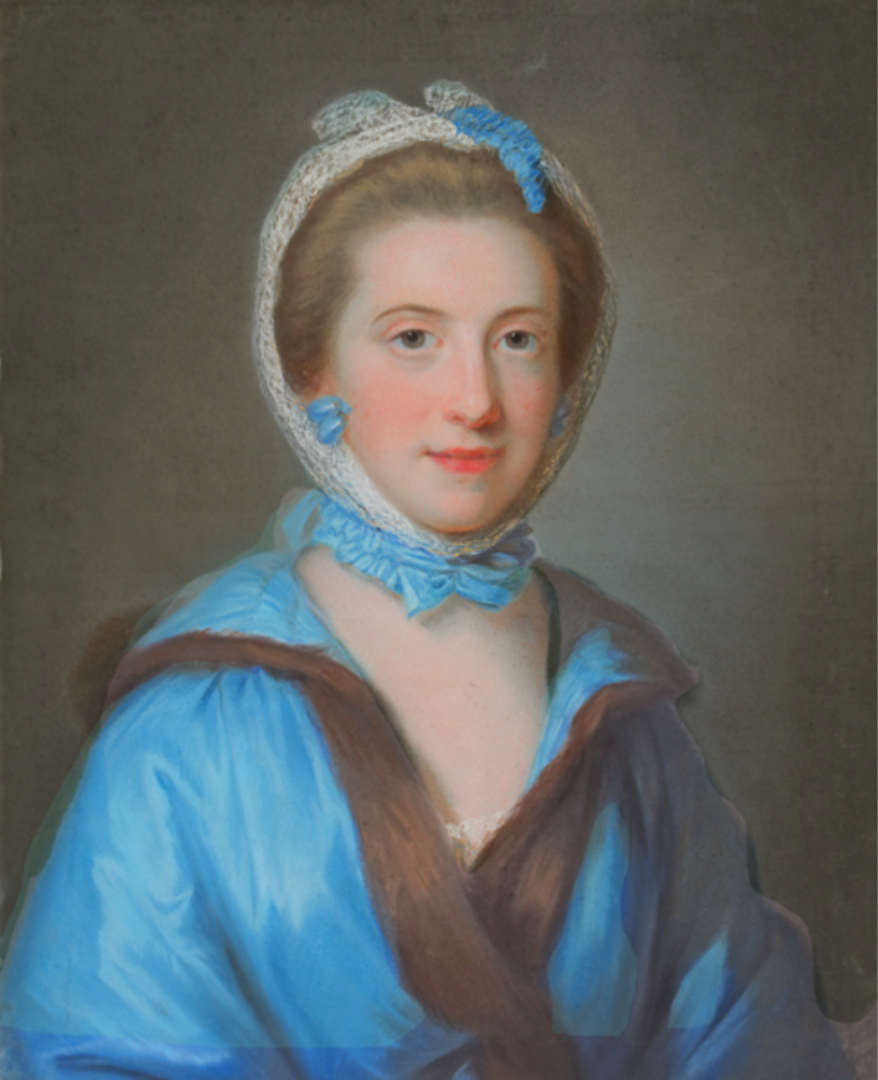
Florida’s Museum of Fine Arts St. Petersburg has made an exciting discovery about a portrait long part of its collection: the work, previously believed to be by the British painter Francis Cotes, is actually by Katherine Read (also spelt Catherine). She was an important woman artist born in Scotland, who lived from 1723 to 1779.
“Katherine Read was extremely well regarded and sought after in her time. Over the course of history, not unlike many woman artists, she was buried in false attributions, which credited male artists of greater stature for market purposes,” the museum said in an email. “While we greatly admire Francis Cotes’s work, we are delighted to welcome Katherine Read to the collection.”
The collector Arthur Ross and his wife donated the pastel on paper work to the museum in 1969. The couple may have purchased it the year before at a Bonham’s sale, where it was offered as the work of Francis Cotes.
That attribution stood until last year, when the museum took a closer look at some of the work in its collection for its exhibition “Explore the Vaults: Images Public and Private, c. 1500–1800.” The curatorial team realized that the purported Cotes actually bore a striking resemblance to pastels by Read.
As a rare professional female artist in the late 18th century, she achieved great success as a portraitist, working across London, Paris, and Rome, and exhibiting alongside her male counterparts at the London Society of Artists and the Royal Academy. Only a handful of other women of the period were so honored, including Mary Moser and Angelica Kauffmann.
The composition, palette, and aesthetic qualities all matched Read’s oeuvre, but to confirm their hunch, the team turned to Neil Jeffares, an expert in British art of the period and the author of the Dictionary of Pastellists Before 1800. He agreed, pointing to the use of blue undertones near the eyes, chin, and hairline, as well as similarities in the depiction of the facial features, as telltale signs of Read’s hand.
“It is not uncommon for the names of artists to become disassociated from their works over the centuries, especially when—like the MFA’s portrait—they are unsigned. Now that we know this is a work by Read, we have the opportunity to better trace its history, perhaps even discover the identity of the sitter,” MFA St. Petersburg associate curator Erin Wilson said in a statement. “This reattribution provides a greater understanding of Read’s body of work and allows us, as an institution, to present a clearer, more balanced interpretation of 18th-century professional artistic practice.”
The museum announced its findings last month and hosted a talk by Katherine Pill, its senior curator of contemporary art, titled “Why Have There Been No Great Women Artists,” after the famed Linda Nochlin essay investigating the causes for women’s exclusion from the art history books.
“The reattribution serves as a vital reminder that the art historical canon is not fixed, and the story of art continues to unfold. As an encyclopedic art museum, we are presented with a valuable opportunity to conduct research that elevates marginalized artists to prominence within the unfolding narrative of art. This is especially crucial for artists whose exclusion, as evidenced by Nochlin’s work, arose from multifaceted factors that surpassed pure talents alone,” Pill said.
Born to a family of Scottish aristocrats, Read was forced to move to France after the Jacobite Rebellion, which her family supported. There she studied with pastel artist Maurice Quentin de la Tour, though the full extent of her artistic education, which also included oil paint, is unknown. She eventually made her way to Rome and met the celebrated pastelist Rosalba Carriera in Venice in 1753. Though Carriera was at that point blind, she is said to have given Read important instruction, and to have posed for a portrait by the younger woman.
With the help of a letter of introduction from a cardinal, Read was able to re-enter British society later that year, and established a thriving practice in London. Among her subjects were none other than the wife of King George III, Queen Charlotte (best known to modern-day audiences for her role in the Netflix series Bridgerton, and her eponymous spinoff). Read’s final years were spent in India, and she died on the voyage back to Britain.
The artist’s auction record has stood at £17,925 ($27,366) since 2002, according to the Artnet Price Database—one of only seven works to hit the five-digit mark. Cotes, by comparison, set a record of £422,500 ($723,582) at Christie’s London in 2014.
More Trending Stories: